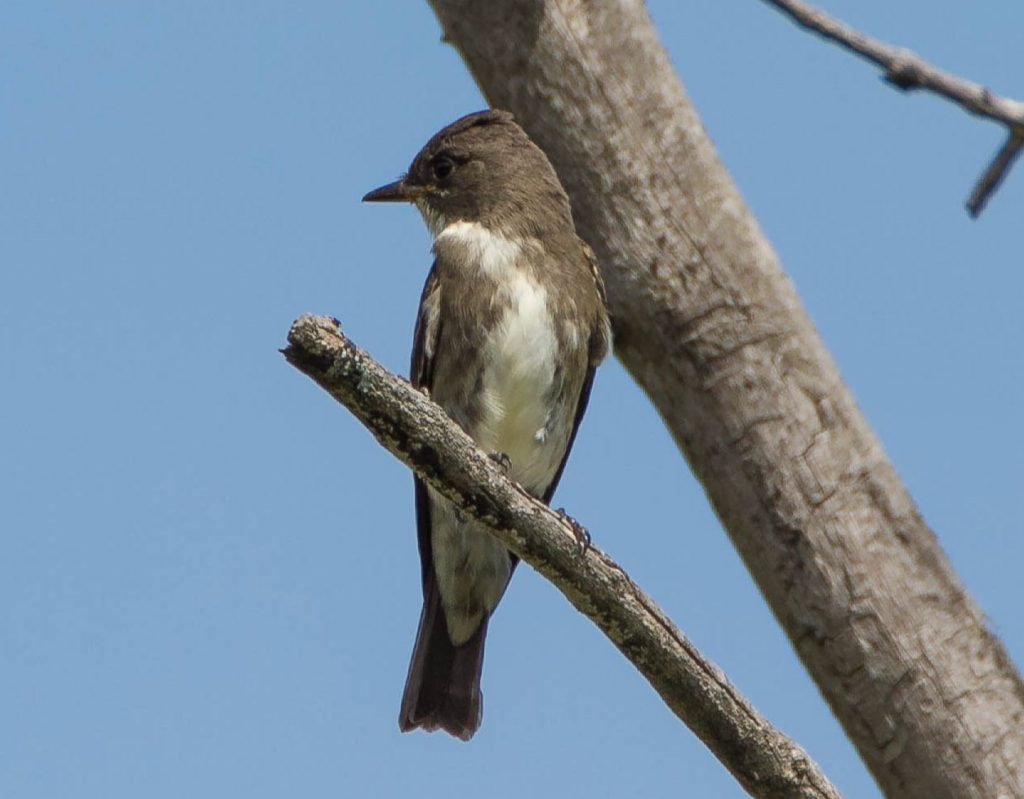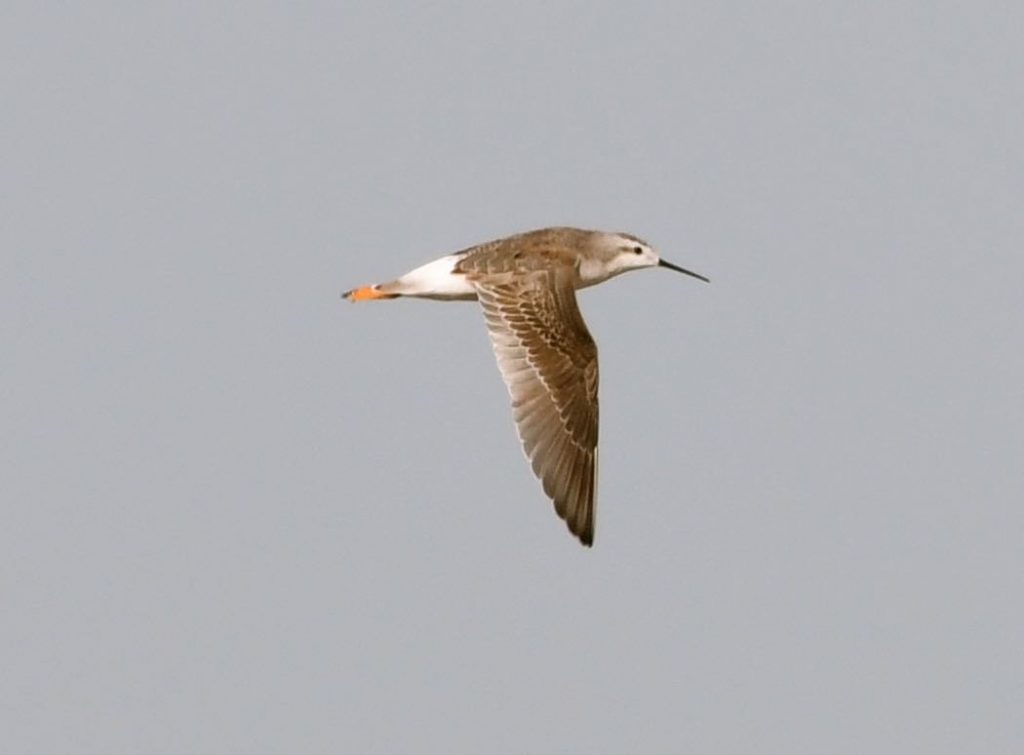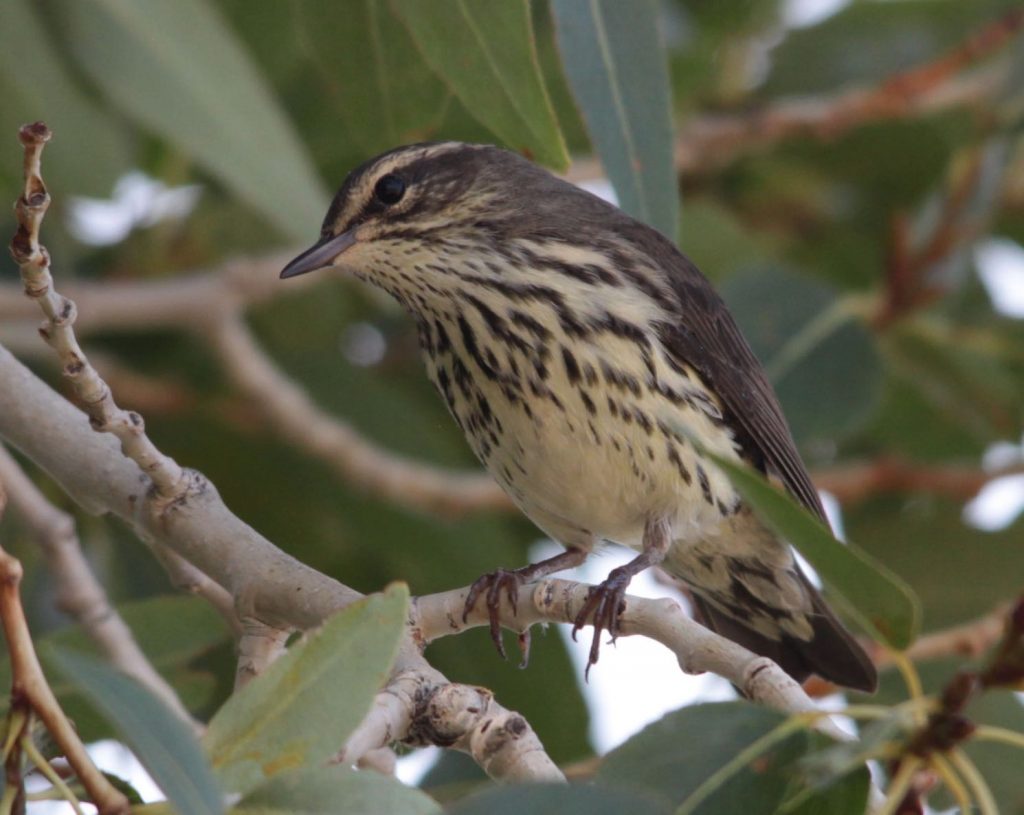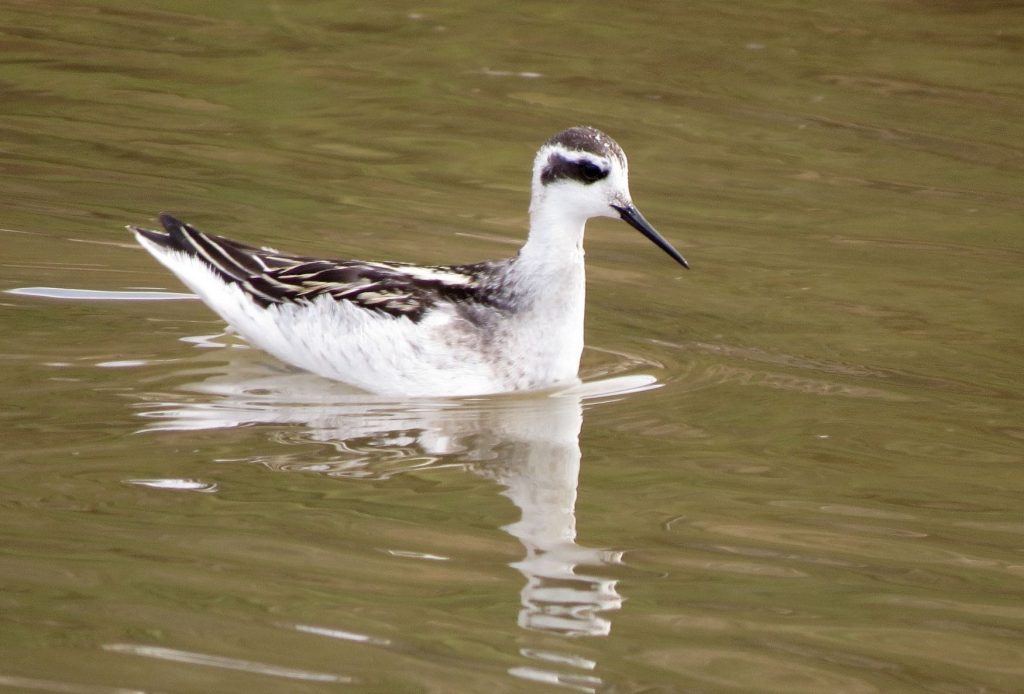Next Friday, BirdCast begins its official Fall 2017 season of weekly forecast and analysis reports. But like last week, we are posting a pre-flight forecast before the flights soon to come! Additionally, we will be introducing new members of Team BirdCast, some new visualizations, and of course discussions of any interesting patterns we see (or hear).
Marginal migration conditions that begin the week will gradually give way to more favorable conditions for light to moderate flights in many areas of the West, while the East will experience pulses of moderate flights in the central Mississippi River Valley, the northern Great Plains, and much of the Northeast during the first half of the period.
Arrows show wind speed and direction (arrow points in the direction to which wind is blowing) 100 m above ground level. Areas with southerly winds are colored red; northerly winds colored blue. Accumulated precipitation (in 6 hour intervals) is green, outlined by white. Broadly speaking, areas of the map in blue will experience conditions that are favorable for migration, and areas where blue and green (and red and blue) intersect and overlap may experience migrant concentrations and fallouts as migrants interact with precipitation.
We use data collected by eBird users help make more accurate forecasts. If you enjoy the predictions contained in these posts, please consider submitting your own bird sightings to eBird to even further improve the content. Every observation counts, whether it be a single bird at a feeder in your backyard, or an entire day spent in a national park. To get started with eBird, head on over to the site!
Please note that photographs and other digital media showing birds come from the Macaulay Library, which receives credit along with the photographer/observer in the media caption as part of a new initiative that allows public contribution, access and use of natural history media.
Need a review of our definitions for regions, species on the move, and migration amounts? Please visit this link.
Quick Links to Regions
Upper Midwest and Northeast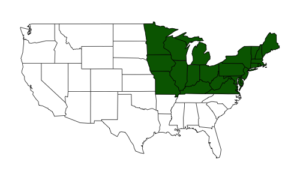 |
Gulf Coast and Southeast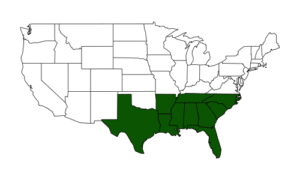 |
Great Plains |
West |
Upper Midwest and Northeast
A frontal passage brings favorable migration conditions to the Great Lakes and Ohio River Valley over the weekend, where locally moderate to isolated heavy flights will occur. These migration conditions generally deteriorate with a return warm and moist conditions, keep most flights local and generally light to moderate. New England and the northern Appalachians experience a pulse of moderate flights by mid week, as northerly and northwesterly flow bring new arrivals. Note in particular the favorable conditions for birds to take flight over the ocean in coastal New England, suggesting birders should avail themselves of coastal viewing points to observe morning flight.
Top Movers
Increasing
| Species | Increase from Last Week | % of Checklists Reporting |
|---|---|---|
| Lesser Yellowlegs | 23% | 8.6 |
| American Redstart | 26% | 6 |
| Baltimore Oriole | 22% | 8.8 |
| Chimney Swift | 13% | 19.1 |
| Black-bellied Plover | 46% | 2.9 |
| Caspian Tern | 20% | 6.4 |
| Ruby-throated Hummingbird | 11% | 22 |
| Cooper's Hawk | 24% | 4 |
| Semipalmated Plover | 13% | 8.9 |
| Ring-billed Gull | 9% | 19.5 |
| Greater Yellowlegs | 17% | 6.5 |
| Black-and-white Warbler | 24% | 3.7 |
| Blue-gray Gnatcatcher | 11% | 9.5 |
| Olive-sided Flycatcher | 102% | 0.3 |
| Eastern Wood-Pewee | 7% | 18.8 |
| American Golden-Plover | 294% | 0.1 |
| Semipalmated Sandpiper | 11% | 9.5 |
| Red-shouldered Hawk | 19% | 2.8 |
| Least Sandpiper | 9% | 11.3 |
| Wood Duck | 8% | 13 |
| Wilson's Phalarope | 45% | 0.5 |
| Blue-winged Teal | 17% | 1.6 |
| Pectoral Sandpiper | 14% | 4.9 |
Gulf Coast and Southeast
Aside from a local pulse of moderate flights in the lower Mississippi River Valley and another in the central and southern Appalachians in the first half of the period, the region will generally experience conditions that are unfavorable for migration and see isolated light to moderate flights. Note, however, an interesting forecast for Friday in the coastal Southeastern US, where a frontal boundary pushes off the coast, slowly, with favorable flight conditions over the Atlantic; birders along the immediate coast should watch for local concentrations of birds (shorebirds and passerines) that may encounter unfavorable conditions over water and make brief stopovers along the coast.
Top Movers
Increasing
| Species | Increase from Last Week | % of Checklists Reporting |
|---|---|---|
| Yellow Warbler | 57% | 3.2 |
| Pectoral Sandpiper | 19% | 5.8 |
| Rufous Hummingbird | 85% | 0.7 |
| Belted Kingfisher | 13% | 7.6 |
| Black-throated Sparrow | 61% | 0.9 |
| Ruby-throated Hummingbird | 7% | 19.4 |
| Olive-sided Flycatcher | 216% | 0.2 |
| Semipalmated Plover | 9% | 5.5 |
| Red-headed Woodpecker | 10% | 4 |
| Yellow-throated Vireo | 17% | 1.8 |
| Red-shouldered Hawk | 3% | 11.6 |
Great Plains
Locally moderate flights begin and end the period, particularly in the northern and central Plains, where favorable conditions for migration, though short-lived, will spawn such flights. The remainder of the period will see most areas of the region experience unfavorable conditions, including areas of precipitation. Birders in these areas should watch closely, particularly in wetlands, for concentrations of shorebirds. This will be especially true in the southern Plains from Monday through Wednesday.
Top Movers
Increasing
| Species | Increase from Last Week | % of Checklists Reporting |
|---|---|---|
| Olive-sided Flycatcher | 394% | 1.4 |
| Northern Harrier | 62% | 6 |
| Swainson's Hawk | 60% | 6.2 |
| Forster's Tern | 53% | 5 |
| Loggerhead Shrike | 56% | 3.6 |
| Rose-breasted Grosbeak | 104% | 1.8 |
| Great Egret | 18% | 15.5 |
| Bullock's Oriole | 122% | 1.5 |
| Ruby-throated Hummingbird | 18% | 14 |
| Eastern Wood-Pewee | 21% | 10.8 |
| Eastern Towhee | 34% | 3.7 |
| Least Flycatcher | 59% | 2.6 |
| Wood Thrush | 101% | 1.3 |
| Cooper's Hawk | 22% | 5.3 |
| American Kestrel | 18% | 9.7 |
| Bald Eagle | 29% | 4 |
| Common Raven | 207% | 0.6 |
| Lark Bunting | 47% | 2.9 |
| Pied-billed Grebe | 18% | 6.1 |
| American Golden-Plover | 666% | 0.2 |
| Western Grebe | 69% | 1.5 |
| Northern Waterthrush | 471% | 0.2 |
West
Locally favorable migration conditions come to the Pacific Northwest and portions of the northern Rockies to begin the period, and light to moderate flights will be apparent where these conditions occur. Wednesday night will see the greatest extents of nocturnal flights, with reasonably widespread light to moderate flights.
Top Movers
Increasing
| Species | Increase from Last Week | % of Checklists Reporting |
|---|---|---|
| Baird's Sandpiper | 90% | 3.3 |
| Red-necked Phalarope | 108% | 2.8 |
| Least Sandpiper | 36% | 10.3 |
| Wilson's Warbler | 38% | 5.4 |
| Greater Yellowlegs | 34% | 8.5 |
| Lesser Yellowlegs | 48% | 4.3 |
| Western Sandpiper | 32% | 9.3 |
| Northern Shoveler | 51% | 2.7 |
| Green-winged Teal | 47% | 2.1 |
| Northern Harrier | 24% | 3.5 |
| Belted Kingfisher | 12% | 8.1 |
| Yellow Warbler | 14% | 10.9 |
| Turkey Vulture | 8% | 20.6 |
| Cinnamon Teal | 18% | 4 |
| Black-throated Gray Warbler | 24% | 2.7 |
| Northern Pintail | 36% | 1.2 |
| Pied-billed Grebe | 12% | 8 |
| Orange-crowned Warbler | 15% | 4.5 |
| American Coot | 10% | 9.4 |
| Green Heron | 14% | 4.7 |
| Nashville Warbler | 31% | 1.2 |
| Ring-billed Gull | 11% | 6.5 |
–––––––––––––––––––––––––––––––––––
Farnsworth and Van Doren

